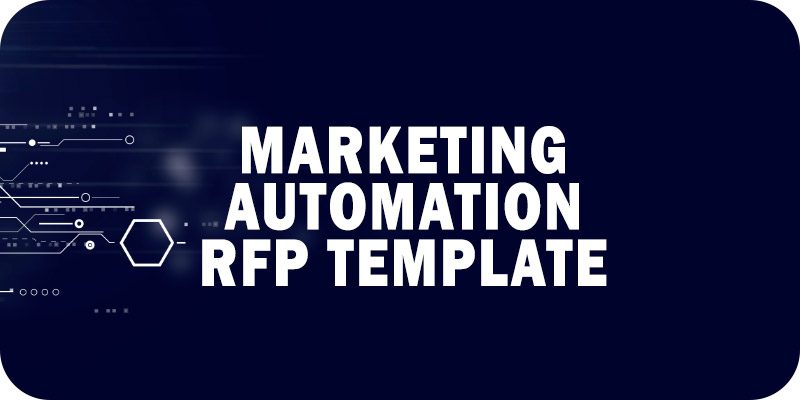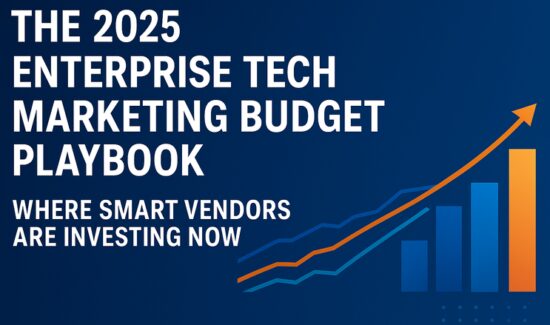A Marketing Automation RFP Template Example


The editors at Solutions Review have compiled this example marketing automation RFP template to help your organization select the best enterprise software for its business needs.
Marketing automation software empowers businesses across industries and all sizes with the tools to streamline and simplify their marketing tasks and workflows. These solutions can automate repetitive, manual, and time-consuming tasks like email marketing, lead generation, customer segmentation, social media marketing, lead scoring, marketing personalization, and more. However, finding the right marketing automation solution for your company is easier said than done, especially considering how many software vendors are in the marketplace.
One way to simplify the process is by using a request for proposal (RFP) template to solicit proposals from potential vendors. In addition to streamlining the vendor selection process, using an RFP template can help you standardize your requirements and evaluation criteria, making comparing proposals from different vendors easier. It can also help ensure you don’t overlook critical requirements or considerations when evaluating solutions.
With that in mind, the Solutions Review editors have compiled an example marketing automation RFP template to help you and your team get started.
A Marketing Automation RFP Template Example
A marketing automation RFP should include essential information about your business, its goals for the software it hopes to work with, and the capabilities the solution must have. The scope of work should also be clearly defined, outlining what the company expects the system to do and including details about any required features or functionalities. Here’s a breakdown of what a marketing automation RFP should include:
-
Introduction and Background: Every RFP should start with an overview of your organization, industry, and marketing goals. You should also describe your company’s current marketing efforts, challenges, and why you’re seeking a marketing automation solution. This will help potential vendors identify whether their software is a good fit.
-
Objectives and Requirements: Clearly state the goals you aim to achieve from implementing a marketing automation platform into your business by outlining your functionality requirements and expectations. To make things even easier, take some time to differentiate between “must-have” and “nice-to-have” features.
-
Technical Environment and Integration: Provide details about your existing technology stack, including CRM, CMS, and other marketing systems your team uses. Be as specific as possible as you outline your integration requirements—you need to know without a shadow of a doubt that the software you purchase will work alongside the other tools in your martech stack.
-
Lead Management and Nurturing: Explain how the software should handle lead capture, scoring, and nurturing. You can do this by describing your ideal lead management and nurturing processes or by outlining any specific lead routing and assignment requirements you have.
-
Campaign Management and Execution: Describe your expectations for the software’s campaign planning, execution, and tracking capabilities. Be specific, and define the workflow automation, campaign reporting, multi-channel campaign management, or other functionalities you know your team needs.
-
Email Marketing and Communication: If you need the software to support your email marketing efforts (and you should), detail the capabilities you need. These often include email creation, templates, personalization tools, automation workflows, email analytics, reporting, and deliverability tracking.
-
Analytics and Reporting: Specify the key performance indicators (KPIs) and metrics you want to track. This involves outlining your reporting and analytics requirements and describing the features you want for measuring campaign performance, customer behavior, and ROI.
-
Personalization and Segmentation: Explain how the software should enable personalized marketing messages and campaigns and describe your desired segmentation capabilities and targeting options. This often involves outlining any requirements related to dynamic content, behavioral targeting, or predictive analytics.
-
Data Management and Compliance: Data is one of the backbones of marketing, so ensure your RFP specifies the data management capabilities you need your marketing automation platform to have. This is also the place to describe any compliance regulations (i.e., GDPR, CCPA) the software must adhere to.
- Support and Training: Describe the support and training services you expect from the software vendor. If you or your team want specific training options (webinars, on-site training, documentation, etc.), be sure to specify it alongside your preferred support channels and availability.
-
Timeline and Budget: Provide the desired timeline for software implementation and outline any budget constraints or considerations you have. This will allow each vendor to decide if it can meet those needs.
-
Vendor Information and Evaluation Criteria: You should also request each vendor to provide their company background, experience, and relevant case studies, alongside client references and testimonials. Specify the criteria you will use to evaluate proposals, such as functionality, ease of use, scalability, and cost.
- Submission Guidelines: Finally, provide instructions that tell vendors how you want them to submit their proposals. Include the deadline, required format, and any additional requirements.
A marketing automation RFP lets you articulate your requirements, evaluate vendors objectively, streamline the decision-making process, and document the entire vendor selection journey. It ensures that you choose the right marketing automation solution that aligns with your organization’s goals and maximizes your marketing efforts.




















